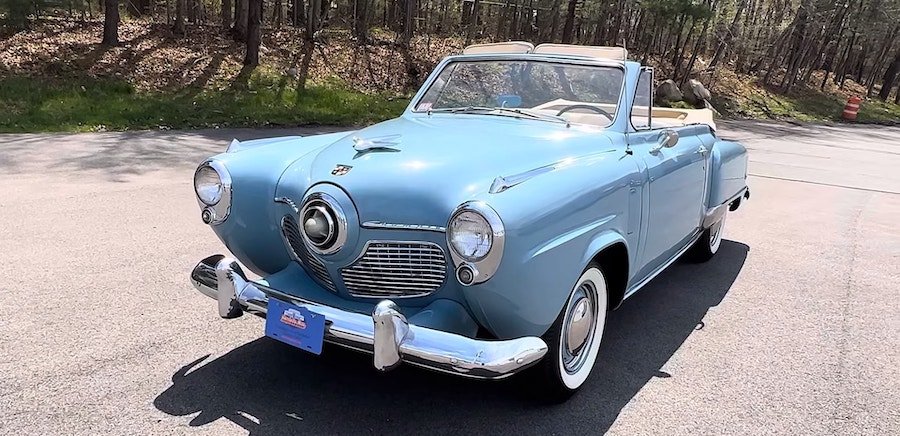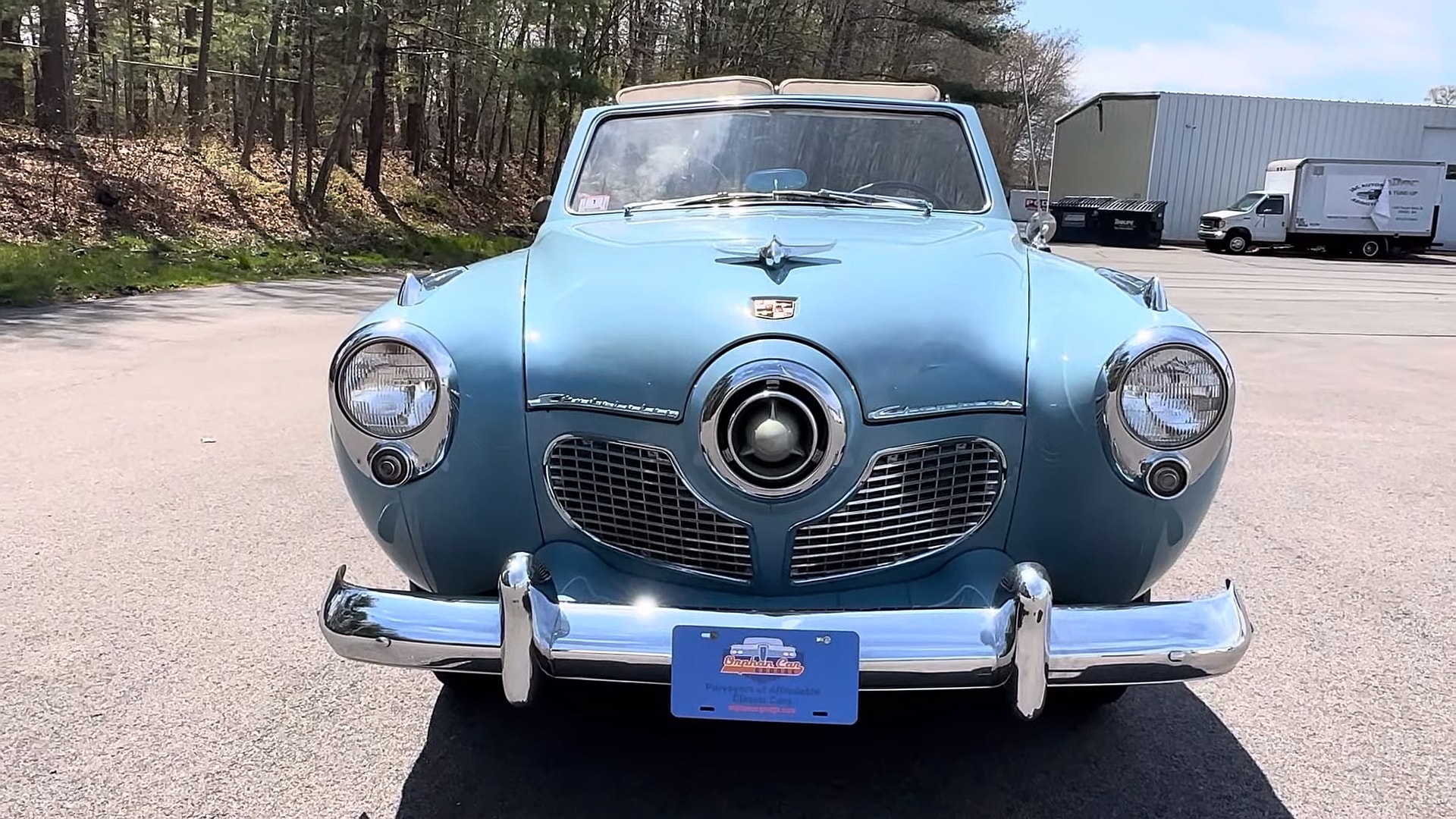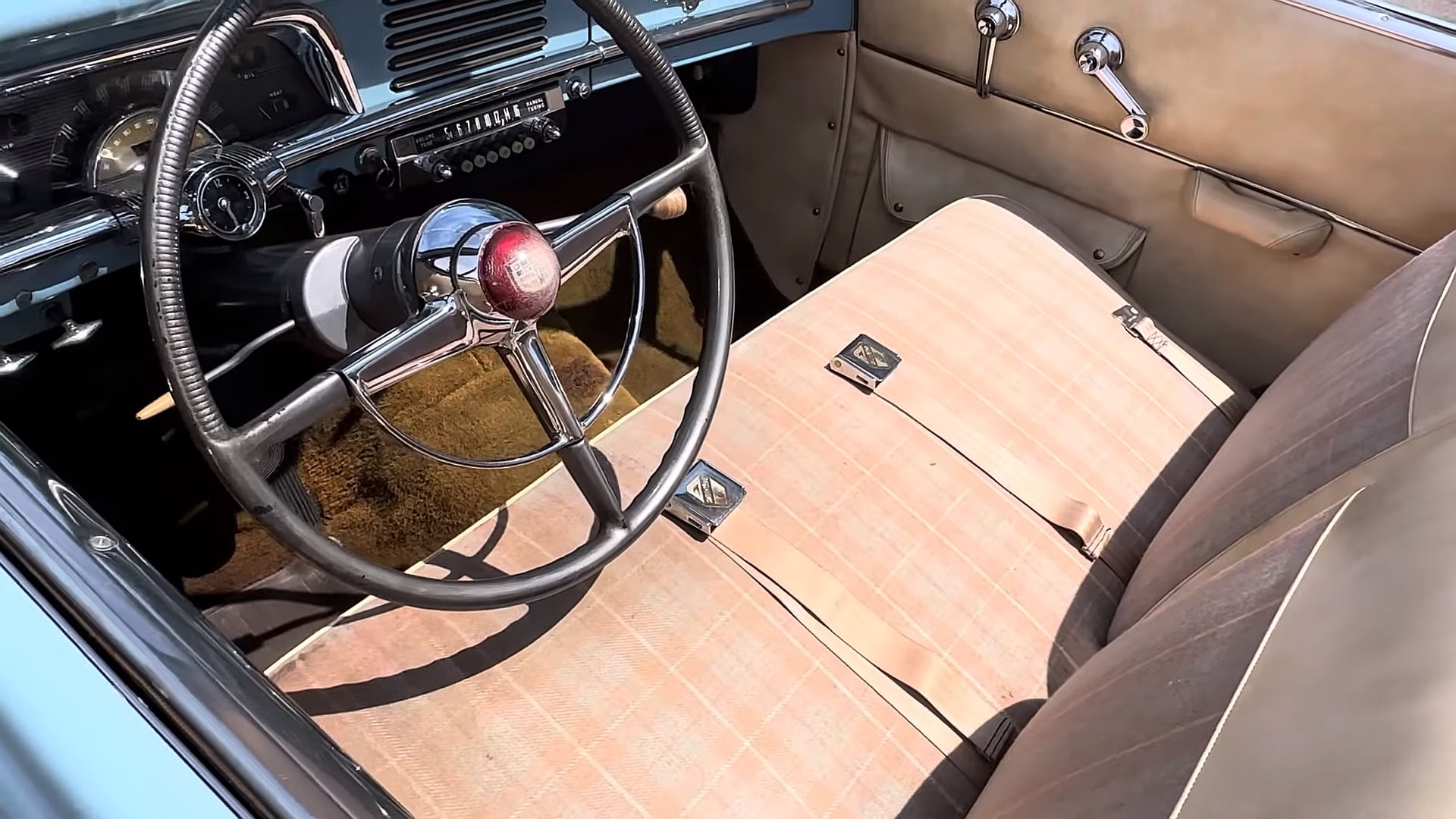1951 Studebaker Champion Restored 40 Years Ago Still Looks Stunning, Also Rare

Or maybe it is the Golden Hawk, one of the prettiest grand tourers ever built? I also like these cars, but my Studebaker of choice is the early 1950s Champion. And it's all because of the bullet-nose styling.
Studebaker introduced this somewhat quirky design language in 1950. The company had emerged in great financial shape from World War II and completely redesigned the Champion and Commander in 1947, making them the first brand-new cars of the era. The Big Three took a couple more years to design new automobiles.
The 1947 redesign seemed outlandish at the time, thanks to the wraparound rear window and flat front fenders. Designed by Raymond Loewy, the new Studebakers were also among the first US cars to feature the ponton styling, which had just gone mainstream in Europe. The unusually long trunk lid of the two-door models was also striking and prompted US carmakers to design more spacious luggage compartments.
In 1950, Studebakers became even bolder thanks to the bullet-nose front end. The three-point sheet metal made the Champion and Commander look futuristic, especially in the two-door Starlight trim. The design was a big hit, and Studebaker sold more than 340,000 Champions and Commanders combined. In 1951, the design's final year, Studebaker delivered nearly 270,000 examples. The 1951 Champion convertible you see here is one of those cars.
Featured by YouTube's "Orphan Car Garage," this Studebaker is one of the finest examples out there. It's also a bit rare due to the convertible body style. While Studebaker sold 144,236 Champions in 1951, only 4,742 were ordered with a canvas top. That's only 3.3% of the total production. It's still a big number compared to some 1950s classics, but we must keep in mind that the survival rate of Champions is very low. Examples that are still in one piece are hard to come by, and restored units like this are downright rare.
Do you know what else is cool about this Champion? It was restored in 1984. Even though the factory-correct paint job is 40 years old, the car still looks stunning on the outside. The interior shows some wear and tear on the carpets and the door panels, but it's also in fantastic condition. I bet this Champion was pampered over the last four decades.
Speaking of the restoration, the owner who handled the refresh had to change quite a few parts, including the fenders. Well, he reportedly used authentic new-old-stock parts in Studebaker boxes almost exclusively. These were easier to find back in the 1980s, less than two decades after Studebaker closed shop with a huge parts inventory in the South Bend factory.
Studebaker closed its main plant in 1963 and shut down its Canadian facility in 1966. One year later, the company disappeared for good after a whopping 115 years in business. It was a sad day for the American automotive industry but at least we have survivors like this to keep the Studebaker memory alive.




Verwandte Nachrichten
